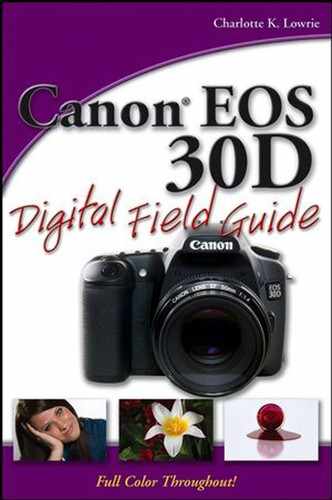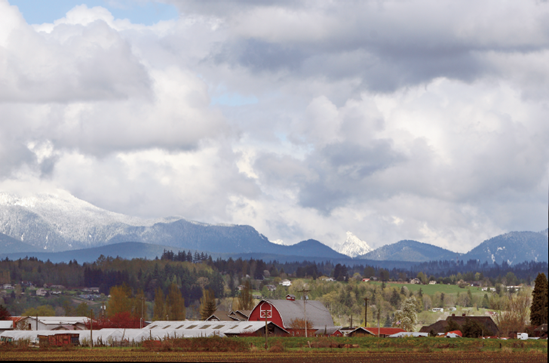The lens is the eye of the camera, so don't underestimate the importance of quality lenses. With a high-quality lens, pictures have stunning detail, high resolution, and snappy contrast. Conversely, low-quality optics produce marginal picture quality.
This chapter takes a look at the lenses available to help you make decisions about which additional lenses you'd like to add to your system for the type of photography you most enjoy.
The EOS 30D image sensor is 1.6 times smaller than a traditional 35mm film frame. It is important to know the sensor size because it not only determines the size of the image, but it also affects the angle of view of the lenses you use. A lens's angle of view is how much of the scene, side-to-side and top-to-bottom, that the lens includes in the image.
The angle of view for all lenses you use on the Canon EOS 30D is narrowed by a factor of 1.6 times at any given focal length, giving an image equal to that of a lens with 1.6 times the focal length. That means that a 100mm lens on a 35mm film camera becomes the equivalent to a 160mm on the EOS 30D. Likewise, a 50mm normal lens becomes the equivalent of an 80mm lens, which is equivalent to a short telephoto lens on a full-35mm-frame size.
Note
The EF-S 18–55mm lens is usable only on the smaller image size cameras, including the EOS 30D, due to a redesigned rear element that protrudes back into the camera body.
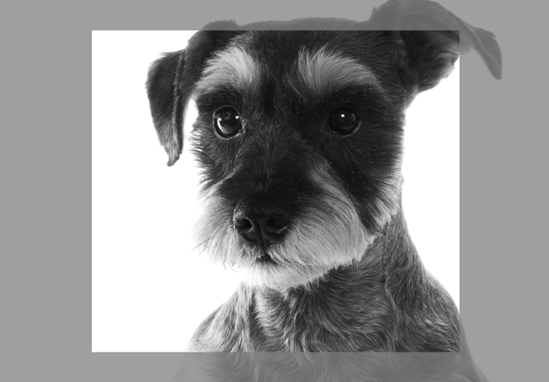
Figure 6.1. This image shows the approximate difference in image size between a 35mm film frame and the Canon EOS 30D. The smaller image size represents the EOS 30D's image size.
This focal-length multiplication factor works to your advantage with a telephoto lens because it effectively increases the lens's focal length (although technically the focal length doesn't change — that's why I qualified it with "effectively"). And because telephoto lenses tend to be more expensive than other lenses, you can buy a shorter and less expensive telephoto lens and get 1.6 times more magnification at no extra cost.
The focal length multiplication factor works to your disadvantage with a wide-angle lens because the sensor sees less of the scene when the focal length is magnified by 1.6. But, because wide-angle lenses tend to be less expensive than telephoto lenses, you can buy an ultra-wide 14mm lens to get the equivalent of an angle of view of 22mm.
Because telephoto lenses provide a shallow depth-of-field, it seems reasonable to assume that the conversion factor would produce the same depth-of-field results on the EOS 30D that a longer lens gives. That isn't the case, however. Although an 85mm lens on a full-35mm-frame camera is equivalent to a 136mm lens on the EOS 30D, the depth of field on the EOS 30D matches the 85mm lens, not the 136mm lens.
This depth-of-field principle holds true for enlargements. The depth of field in the print is shallower for the longer lens on a full-frame camera than it is for the EOS 30D.
Lenses range in focal lengths (the amount of the scene included in the frame) from fisheye to super telephoto and are generally grouped into three main categories: wide angle, normal, and telephoto. There are also macro lenses that serve double-duty as either normal or telephoto lenses as well as offering macro capability.
Wide-angle lenses offer a wide view of a scene. Lenses shorter than 50mm are commonly considered wide angle on full-frame 35mm image sensors. For example, 16mm and 24mm lenses are wide angle. A wide-angle lens also offers sharp detail from foreground to background, especially at narrow apertures such as f/22. The amount of reasonably sharp focus front to back in an image is referred to as depth of field.
Note
Depth of field is discussed in more detail in Chapter 3.
Normal lenses offer an angle of view and perspective very much as your eyes see the scene. On full 35mm-frame cameras, 50mm to 55mm lenses are considered normal lenses. Normal lenses provide extensive (wide?-yes) depth of field (particularly at narrow apertures) and are compact and versatile.
Telephoto lenses offer a narrow angle of view, enabling close-up views of distant scenes. On full 35mm-frame cameras, lenses with focal lengths longer than 50mm are considered telephoto lenses. For example, 80mm and 200mm lenses are telephoto lenses. Telephoto lenses offer shallow depth of field and provide a softly blurred background, particularly at wide apertures, and a closer view of distant scenes and subjects.
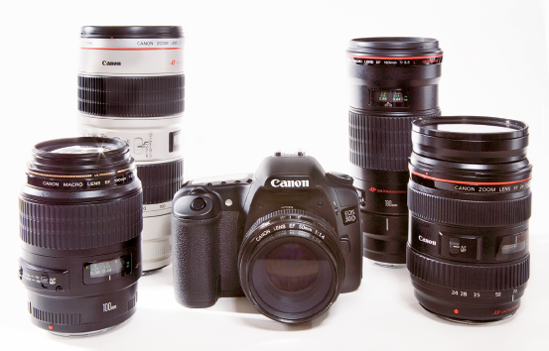
Figure 6.2. The EOS 30D offers even more creative options with the selection of Canon lenses including the EF and EF-S series.
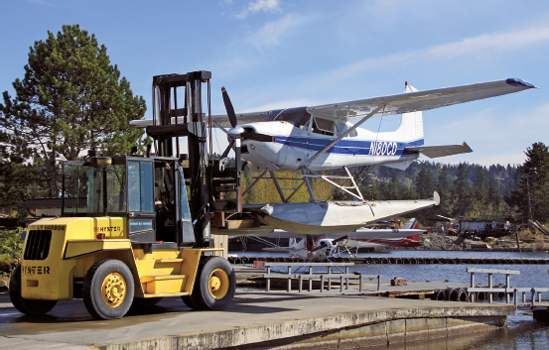
Figure 6.3. A wide-angle lens captures the action of this scene as a float plane is moved to the water for takeoff. This image was taken with a zoom lens set to 40mm, which is equivalent to 64mm on the EOS 30D. As a result of the focal length multiplication factor on the 30D, less of the scene is included than would be on a full-frame camera.
Macro lenses are designed to provide a closer lens-to-subject focusing distance than non-macro lenses. Depending on the lens, the magnification ranges from half-life size (0.5x) to 5x magnification. Thus, objects as small as a penny or a postage stamp can fill the frame, revealing breathtaking details that are commonly overlooked or not visible to the human eye. By contrast, non-macro lenses typically allow maximum magnifications of about one-tenth life size (0.1x). Macro lenses are single focal-length lenses that come in normal and telephoto focal lengths.
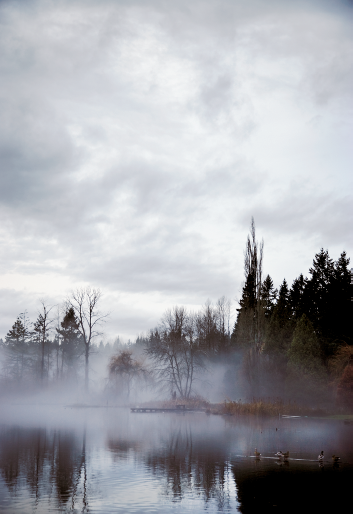
Figure 6.4. A normal lens captures the size relationships of various items in the scene much as your eyes see them. This picture was taken with a 50mm lens.
In addition to the basic lens categories, you can also choose between zoom and single-focal-length (also called prime) lenses. Zoom lenses offer a range of focal lengths in a single lens allowing you the equivalent of having three or four single-focal length lenses in one lens. In addition, zoom lenses are able to maintain focus during zooming. Zoom lenses are available in wide-angle and telephoto ranges.
For example, in a wide-angle zoom lens with two lens groups, the first group has negative refraction (divergence), and the second group has positive refraction (convergence). The lens is designed with retro-focus construction. Further, to solve various limitations of this design, to keep the lens size compact, and to compensate for aberrations with fewer lens elements, most lenses use a multi-group zoom with three or more movable lens groups.
Some zoom lenses are slower than single-focal length lenses, and getting a fast zoom lens usually comes at a higher price. In addition, some zoom lenses have a variable aperture which means that the minimum aperture changes at different zoom settings (discussed in the following sections).
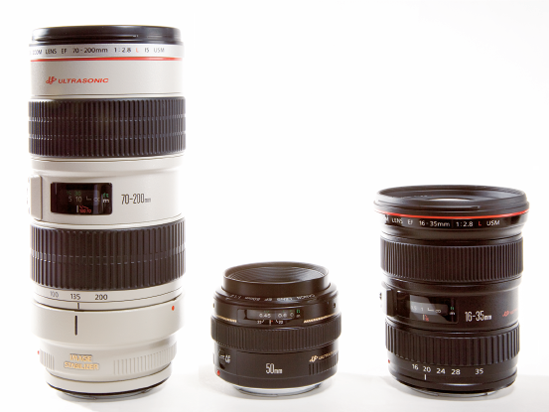
Figure 6.7. Although zoom lenses are versatile, single-focal-length lenses are often smaller and lighter. The Canon EF 50mm f/1.4 lens, shown in the center, is one of the lightest and still most versatile lenses in Canon's lineup.
The obvious advantage of a zoom lens is the ability to quickly change focal lengths, and image composition, without changing lenses. In addition, only two or three zoom lenses are needed to encompass the focal range you use most often for everyday shooting. For example, carrying a Canon EF-S 17–55mm IS USM lens and a Canon EF 55–200mm f/4.5-5.6 II USM lens, or a similar combination of L-series lenses, provides the focal range needed for most everyday shooting.
Of course, a zoom lens also offers the creative freedom of changing image composition with the turn of the zoom ring — all without changing your shooting position or changing lenses. Most mid-priced and more expensive zoom lenses offer high-quality optics that produce sharp images with excellent contrast.
Although zoom lenses allow you to carry around fewer lenses, they tend to be heavier than their single-focal-length counterparts. Mid-priced, fixed-aperture zoom lenses tend to be slow, meaning that with maximum apertures of only f/4.5 or f/5.6, they call for slower shutter speeds that limit your ability to get sharp images when handholding the camera.
Some zoom lenses have variable apertures. If a variable-aperture f/4.5 to f/5.6 lens has an aperture of f/4.5 at the widest focal length, it has an aperture of f/5.6 at the telephoto end. Unless you use a tripod or your subject is stone still, your ability to get a crisp picture in lower light at f/5.6 will be questionable.
Note
For a complete discussion on aperture, see Chapter 3.
More expensive zoom lenses offer a fixed and fast maximum aperture, meaning that with maximum apertures of f/2.8, they allow faster shutter speeds that enhance your ability to get sharp images when handholding the camera. But the lens speed comes at a price: The faster the lens is, the higher the price.
Long the mainstay of photographers, single-focal-length lenses offer only one focal length. Single-focal-length lenses such as Canon's venerable EF 50mm f/1.4 USM lens, EF 100mm f/2.8 Macro USM, and other lenses are also called prime lenses. To change image composition, you must move closer to or farther from your subject, or change lenses. Single-focal-length lenses are typically fast lenses that do not offer Image Stabilization (IS), and that offer excellent sharpness and contrast.
Depending on the lens type, Canon single-focal-length lenses offer aspherical, fluorite, UD glass, super UD glass, and high-refraction glass for optical clarity, sharpness, and image performance. Multiple coatings help prevent ghosting and provide accurate color balance. Lenses are analyzed to ensure that the bokeh, or out-of-focus area of the image, appears natural and pleasing. All Canon lenses offer the option of full-time manual focus as well as Ultrasonic motors (USM) for quiet operation of the autofocus drive mechanism.
Unlike zoom lenses, single-focal-length (prime) lenses tend to be fast with maximum apertures of f/2.8 or wider. Wide apertures allow fast shutter speeds, and that combination allows you to handhold the camera in lower light and still get a sharp image. Compared to zoom lenses, single-focal-length lenses are lighter and smaller.
In addition, many photographers believe that single-focal-length lenses are sharper and provide better image quality overall than zoom lenses.
Most prime lenses are lightweight, but you need more of them to cover the range of focal lengths needed for everyday photography, although some famous photographers used only one prime lens. Single-focal-length lenses also limit the options for on-the-fly composition changes that are possible with zoom lenses.
A wide-angle lens is great for capturing scenes ranging from large groups of people to sweeping landscapes, as well as for taking pictures in places where space is cramped.
When you shoot with a wide-angle lens, keep these lens characteristics in mind:
Extensive depth of field. Particularly at small apertures such as f/8 or f/11, the entire scene, front to back, will be in reasonably sharp focus. This characteristic gives you slightly more latitude for less-than-perfectly focused -pictures.
Narrow, fast apertures. Wide-angle lenses tend to be faster (meaning they have wide apertures) than telephoto lenses. These lenses are good candidates for everyday shooting even when the lighting conditions are not optimal.
Distortion. Wide-angle lenses can distort lines and objects in a scene, especially if you tilt the camera up or down when shooting. For example, if you tilt the camera up to photograph a group of skyscrapers, the lines of the buildings tend to converge and the buildings appear to fall backward (also called keystoning). You can use this wide-angle lens characteristic to creatively enhance a composition, or you can avoid it by moving back from the subject and keeping the camera parallel to the main subject. Some wide-angle lenses also can produce images that tend to be soft along the edges.
Tip
To avoid keystoning, you can insert a small bubble level on the hot shoe to ensure that the camera is level. Keystoning and other lens distortions can often be corrected during photo editing; however, it is always better to avoid problems when shooting than fixing problems afterward.
Perspective. Wide-angle lenses make objects close to the camera appear disproportionately large. You can use this characteristic to move the closest object farther forward in the image, or you can move back from the closest object to reduce the effect. Wide-angle lenses are not suitable for close-up portraits because they exaggerate the size of facial features closest to the lens.
Tip
If you're shopping for a wide-angle lens, look for aspherical lenses. These lenses include a non-spherical element that helps reduce or eliminate optical flaws to produce better edge-to-edge sharpness and reduce distortions.
Choose a telephoto lens to take portraits and to capture distant subjects such as birds, buildings, wildlife, and landscapes. Telephoto lenses such as 85mm and 100mm are perfect for portraits, while longer lenses (300mm to 800mm) allow you to keep a safe distance while photographing wildlife. When you use a telephoto lens with a wide aperture such as f/4.0, the shallow depth of field can make near objects much less obvious.

Figure 6.9. Telephoto lenses are larger and heavier than other lenses, but a good telephoto zoom lens is indispensable for photographers. This 70–200mm lens also features Image Stabilization, IS (a Canon trademark), that helps counteract slight movement when handholding the camera.
When you shoot with a telephoto lens, keep these lens characteristics in mind:
Shallow depth of field. Telephoto lenses magnify subjects and provide a very limited range of sharp focus. At wide apertures, such as f/4, you can reduce the background to a soft blur. Because of the extremely shallow depth of field, pay attention to careful focus. Canon lenses include full-time manual focusing that you can use to fine-tune the camera's autofocus.
Narrow coverage of a scene. Because the angle of view is narrow with a telephoto lens, much less of the scene is included in the image. You can use this characteristic to exclude distracting scene elements from the image.
Slow lenses. Mid-priced telephoto lenses tend to be slow; the widest aperture is often f/4.5 or f/5.6, which limits the ability to get sharp images without a tripod in all but the brightest light. And because of the magnification factor, even the slightest movement is exaggerated.
Perspective. Telephoto lenses tend to compress perspective, making objects in the scene appear stacked together.
If you're shopping for a telephoto lens, look for those with low-dispersion lens elements that help reduce distortion and improve sharpness. Image Stabilization further counteracts blur caused by handholding the camera.
A normal lens is a great walk-around lens for everyday shooting. On a 35mm film camera, it is 50mm, but on the EOS 30D, a 35mm lens is closer to normal when the focal-length conversion factor is considered.

Figure 6.10. A normal lens is small and light. It provides an angle of view similar to that of the human eye.
Normal lenses are lightweight and offer fast apertures. In addition, normal lenses seldom have issues with optical distortion, and they produce pictures with a pleasing -perspective. Normal lenses are reasonably priced and offer sharp images with excellent contrast.
Macro lenses open a new world of photographic possibilities by offering an extreme level of magnification. In addition, the reduced focusing distance allows beautiful, moderate close-ups as well as extreme close-ups of flowers and plants, animals, raindrops, and everyday objects.
Normal and telephoto lenses offer macro capability. Because these lenses can be used both at their normal focal length as well as for macro photography, they do double-duty.
Canon offers macro lenses in the following focal lengths:
50mm, f/2.5 Compact Macro (0.5x magnification). A Life-Size Converter EF is also available for the EF 50mm Compact Macro lens.
EF-S 60mm f/2.8 Macro USM lens (1:1 magnification).
100mm f/2.8 Macro USM and 180mm f/3.5L Macro USM (1:1 magnification).
MP-E 65mm f/2.8 Macro Photo (1x-5x magnification).
When you shoot with a macro lens, keep these characteristics in mind:
Extremely shallow depth of field. At 1:1 magnification, the depth of field is less than 1mm at maximum aperture. The shallow depth of field makes focusing critical; even the slightest change to the focusing ring can throw the picture out of focus.
High magnification. With extremely high magnification, any movement causes blur. Always use a tripod and cable release or remote to release the shutter.
If you're buying a macro lens, you can choose lenses by focal length or by magnification. If you want to photograph moving subjects such as insects, choose a telephoto lens with macro capability. Moving subjects require special techniques and much practice.
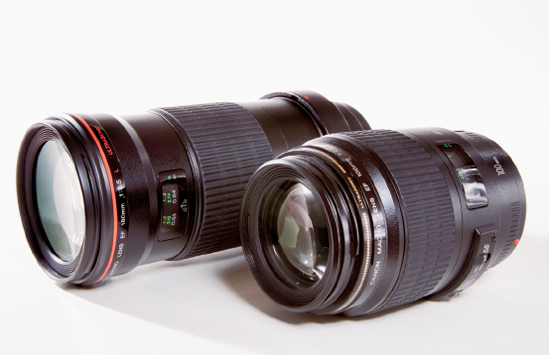
Figure 6.11. Canon offers several macro lenses including the EF 180MM f/3.5L Macro USM that offers 1x (life-size) magnification and a minimum focusing distance of 0.48m/1.6 ft. This focusing distance is great for small objects such as insects where a longer working distance is desirable. Also shown here is the Canon EF 100 f/2.8 Macro, USM lens.
Note
For ideas on using macro lenses, see Chapter 7.
Based on focal length and magnification, choose the lens that best suits the kinds of subjects you want to photograph.
For relatively little cost, you can increase the focal length of any lens by using an extender. An extender is a lens set in a small ring mounted between the camera body and a regular lens. Canon offers two extenders, a 1.4x and 2x, that are compatible with L-series Canon lenses. Extenders can also be combined to get even greater magnification.
For example, using the Canon EF 2xII extender with a 600mm lens doubles the lens's focal length to 1200mm before applying 1.6x. Using the Canon EF 1.4II extender increases a 600mm lens to 840mm.
Tip
At longer focal lengths, it is critical to stabilize the camera on a tripod.
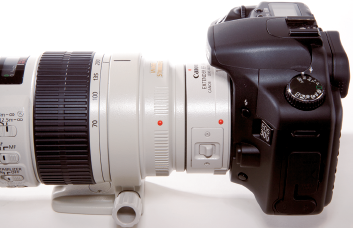
Figure 6.12. Extenders, such as this Canon EF 1.4 II mounted between the camera body and the lens, extend the range of L-series lenses. They increase the focal length by a factor of 1.4x, in addition to the 1.6x focal-length conversion factor inherent in the camera.
Extenders generally do not change camera operation in any way, but they do reduce the light reaching the sensor. The EF 1.4xII extender decreases the light by one f-stop, and the EF 2xII extender decreases the light by two f-stops. And, in addition to being fairly lightweight, the obvious advantage of extenders is that they can reduce the number of telephoto lenses you carry.
